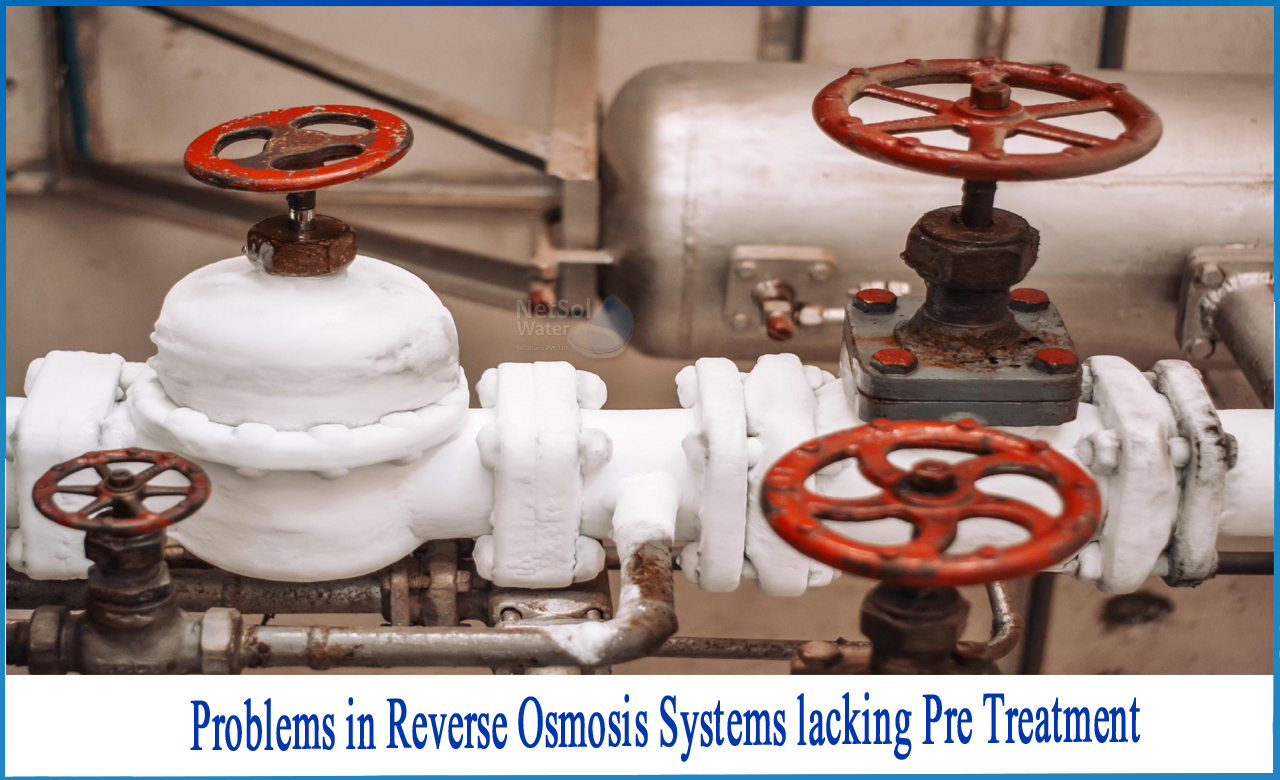What is Reverse Osmosis?
Reverse osmosis is a filtration technology that uses pressure to remove big molecules and ions from solutions when they are on one side of a selective membrane. As a result, the solute is trapped on the pressured side of the membrane while the pure solvent is permitted to pass through.In both the public and private sectors, reverse osmosis has now become one of the most widely used water purification methods.
Pre-treating any component that could affect the efficacy of your reverse osmosis membrane is critical to maintaining the quality of the membrane itself. Some of these compounds may simply cause harm over time, while others may completely destroy a membrane.
Need of pre-treatment for RO systems
Because of the spiral wound architecture of RO membranes, pre-treatment is essential when working with them. The material is designed in such a way that it can only flow in one direction through the system. As a result, back pulsing with water or air agitation to scour the surface and remove particulates is not possible due to the spiral wound design. Membrane surface systems are especially sensitive to fouling because accumulated material cannot be removed (loss of production capacity). As a result, any RO system must include pretreatment.
Most RO plant manufacturers will provide a complete installation, including pretreatment tools and equipment, in most circumstances. Filtration devices, softeners, anti-scalants, and activated carbon are examples of this. These devices, which are both simple and inexpensive, can considerably extend the life of the plant.We frequently deal with highly dirty water that necessitates special attention before to use. The stress on the RO membrane, which is the most valuable and susceptible, is reduced by pretreatment.
What is the Problems in RO Systems lacking Pre treatment?
The following issues can arise if a RO plant does not apply the proper pretreatment:
1. Fouling: Most RO systems' feedwater is substantially contaminated with tiny pollutants such as bacteria, germs, and viruses. These pollutants accumulate in huge amounts and clog the RO membrane. Because of the lesser permeate flow, the pressure drops. This will reduce the membrane's lifespan, and because cleaning is required, operational costs will rise. Pretreatment can help to slow down the pollutant collection process.
2. Scaling: Wherever water gathers, we can all witness some form of scaling. As the concentration of inorganic matter in the water rises, inorganic matter begins to precipitate on the RO membrane. This is what scaling is all about. It reduces the flow of permeate, reduces pressure, and reduces the capacity of salt rejection. As a result, the RO operation becomes less effective, and the water quality degrades.
3. Chemical Effects: Today, most RO plant manufacturers create plants with very thin membranes. The permeate flow is improved as a result of this. The thin membranes, on the other hand, are doubly sensitive to injury and attack, particularly from toxins like chlorine. These compounds have the potential to burn holes in the membrane, causing irreversible damage.
The following are some of the other general effects:
a) Membrane life is being shortened.
b) Increased operational costs
c) Water of poor quality
Conclusion
Repairing a RO system can be a time-consuming procedure, as it requires disassembling the complete system and then reassembling it. You can use our platform to try the services of specialists and be worry-free in the comfort of your own home or business. Netsol Water products and solutions can provide the water your plant requires at every stage!
For further assistance or product-purchase related query,
Call us on +91-9650608473;
Or write us at enquiry@netsolwater.com



